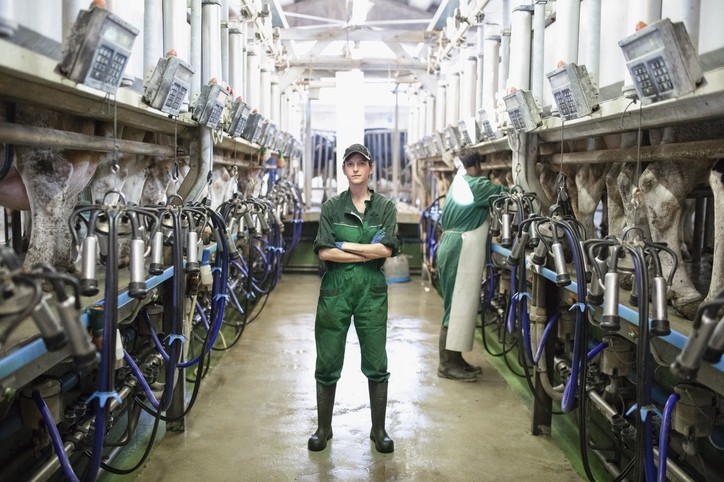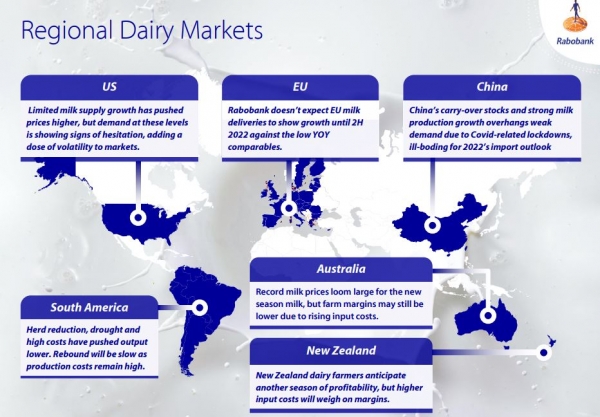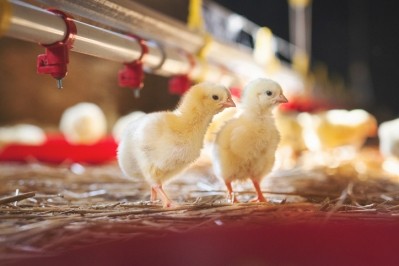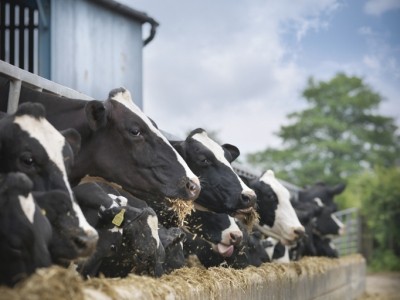Dairy farmers should be cautious about making cost-cutting changes to feed rations, warns Rabobank

Record-high feed costs and weather-related issues have been directly impacting margins for dairy farmers across the Big-7 diary producing regions, noted the analysts in their global dairy quarterly Q2 2022.
For the first time since 2016, milk production in those regions contracted year-on-year for three consecutive quarters, found the outlook.
“Global herds have contracted or are facing barriers to grow, making it harder for milk output to rebound after the current slump. If weakening commodity prices translate into lower farmgate prices in coming quarters, that could result in a less impress recovery,” said the Rabobank team.
Milk production growth and the feed costs scenario is set to remain challenging, stressed the analysts.
Producers around the globe, they continued, are facing higher corn and soybean prices and weather disruptions in certain regions, notably Oceania and South America. And feed costs will remain elevated in 2022/23, predicted the analysts.
“Our most recent AgriCommodities markets monthly shows that price forecasts for CBOT corn have seen a slight decrease from the previous report but are still close to record-high levels. Corn is expected to peak in Q2 2022 and remain above USc/bu 700 into at least Q2 2023.
"Meanwhile, the outlook for soybean prices also remains challenging for dairy farmers, with our forecasts suggesting prices above USc/bu 1500 for CBOT soy for the next 12 months.”
The unresolved Russia-Ukraine conflict is adding to cost-side pressures. “The war in Ukraine continues to put pressure on grain and oilseed prices, as the vast exports of corn and sunflower seeds from Ukraine are not entering the global market. Limited Russian and Belarussian exports of fertilizers and other grains are also contributing to higher feed cost, upping production costs.”
On-farm feed versus purchased inputs
Farms that grow most of their feed will fare better than those that rely more heavily on purchased feed, said the Rabobank team.
“Expiring feed contracts and hedges will exacerbate this divide, forcing buyers to lock in at higher current prices. Producers will be keeping a keen eye on costs but should be cautious not to make cost-cutting changes to feed rations at the expense of negatively impacting the production of high-value milk components.”
Inflationary pressures will also trigger lower demand in rich and poor countries, reported Rabobank.
Consumers are being hit by a global inflation wave not seen since the 1970s and that weakening consumer purchasing power is making it difficult for milk processors to pass increased production costs on to consumers.
“While developed country consumers are usually more resilient to higher prices, this time around the impact on energy and fuel prices are severe and are resulting in changing consumer behavior.
“Some countries like the UK are already implementing measures to protect low-income families with one-off payments and energy bill discounts due to diminished purchasing power.”
Oversupply in China
China is lowering its imports, due to strong domestic milk production coupled with weaker consumer demand related to COVID-19 related measures, and high inventories, reported the team.
“Overall liquid milk equivalent, excluding whey (LME) imports are already 4% lower for the first four months of the year with some categories down sharply (whey -40%).”
China’s non-whey import demand is expected to decrease by 34% YOY in 2022, they forecast.
“The current slowdown in global milk output is directly related to higher costs of production and weather events. In the past, production has recovered and surpassed previous peaks, but now there are structural issues that could limit a significant rebound in production from some key exporters,” concluded Andrés Padilla, senior analyst at Rabobank.














